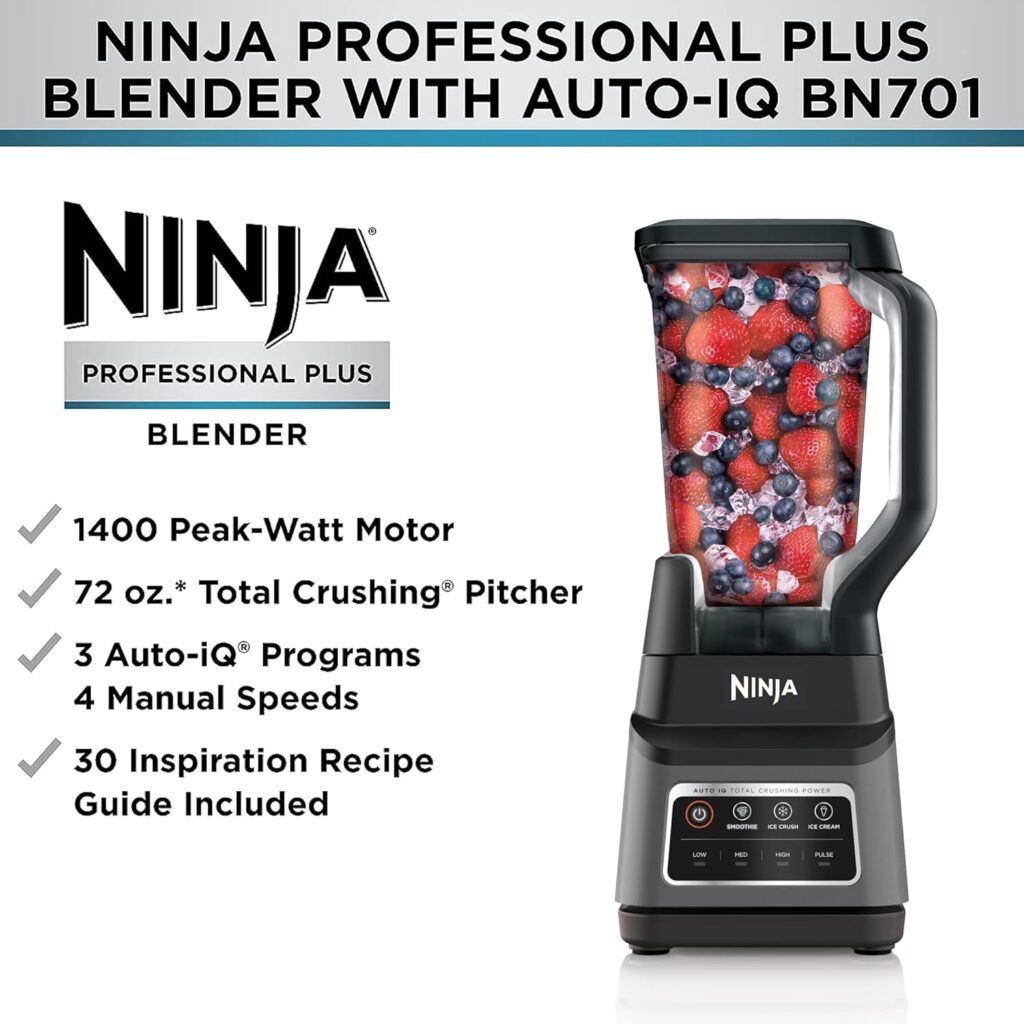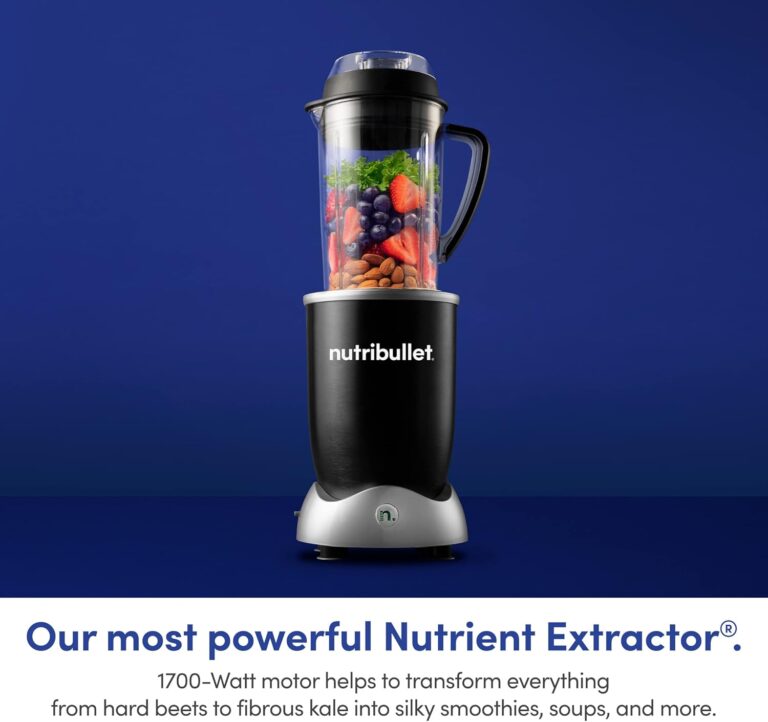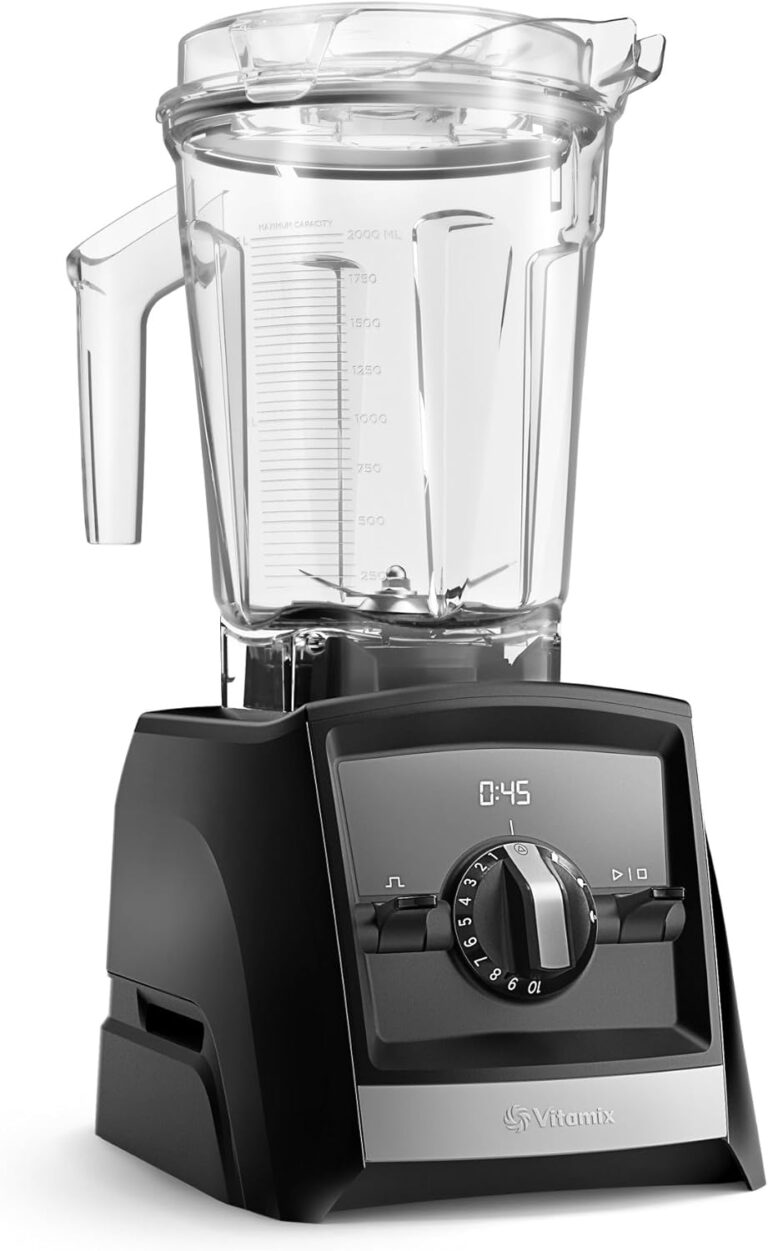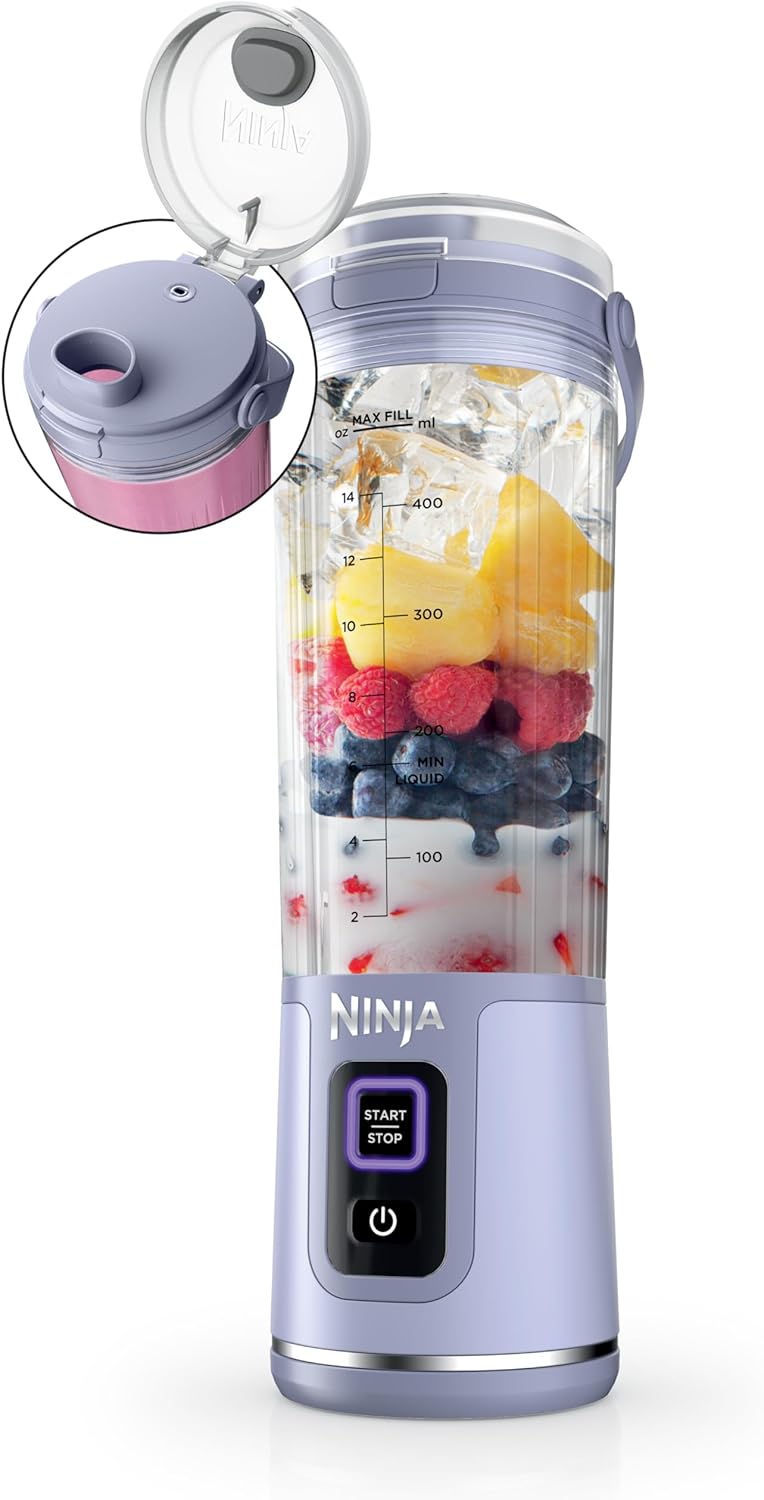
The Ninja BN701 and Ninja BN751 are two of Ninja’s most powerful countertop blenders. They both deliver strong performance with 1400-watt motors, large blending capacities, and Auto-iQ technology designed to simplify blending tasks. On the surface, they may seem nearly identical, but when you look closer, there are clear distinctions in control, functionality, and use case.
If you’d like to explore more than just Ninja models, check out all of our blender reviews to compare a variety of brands and features.
This breakdown will help you understand the real differences between the two models so you can make an informed decision based on how you actually use a blender in your kitchen.
Table of Contents
Overview of Key Differences
| Feature | Ninja BN701 | Ninja BN751 |
|---|---|---|
| Motor Power | 1400 watts | 1400 watts |
| Preset Programs | Smoothie, Ice Crush, Ice Cream | Smoothie, Ice Crush, Manual/Pulse |
| Manual Speed Control | No | Yes |
| Blade System | Total Crushing blades | Total Crushing blades |
| Pitcher Size | 72 ounces | 72 ounces |
| Auto-iQ Technology | Yes | Yes |
| Best For | Basic smoothies, frozen drinks | Smoothies, soups, sauces, variable textures |
| Use Case Focus | Simplified blending with presets only | Presets plus manual versatility |
Design and Build
Both the BN701 and BN751 have a nearly identical look and feel. They feature a black base, BPA-free plastic construction, and Ninja’s signature Total Crushing blade system that uses stacked, multi-level blades to tear through ice and tough ingredients. The base footprint is similar, and both models use a 72-ounce pitcher that is dishwasher safe.
What sets the BN751 apart is a slightly enhanced interface that includes a dedicated manual mode. This gives you more precise control over the blending process — something that the BN701 lacks. While this may not seem like a big deal for basic smoothies, it becomes crucial if you frequently prepare items like soups, sauces, or salsas, where texture control matters.
Control and Programs
BN701
The Ninja BN701 is built for users who value pre-programmed simplicity and effortless operation. It comes equipped with three dedicated Auto-iQ buttons: Smoothie, Ice Crush, and Ice Cream. Each program is pre-timed and uses Ninja’s intelligent pulsing patterns to deliver optimal results for specific tasks. With just one press, the BN701 automatically adjusts blending speeds and pauses to ensure consistent texture and smooth blending.
This makes it incredibly convenient if you’re looking for a push-button solution for everyday recipes like breakfast smoothies, post-workout protein shakes, or frozen cocktails. However, if you need to make mid-blend adjustments or achieve a more precise texture, you’re locked into the preset programs. Learn more details in our full Ninja BN701 review.
BN751
In contrast, the Ninja BN751 offers more versatility thanks to its combination of preset Auto-iQ programs and manual variable speed control. It includes the same Smoothie and Ice Crush presets as the BN701, but instead of a third recipe-specific preset, the BN751 introduces a manual mode that gives you full control over speed and duration.
This is especially useful for home cooks who want to blend to exact specifications — whether you’re pulsing onions for salsa, gently mixing sauces, or slowly emulsifying salad dressings. With manual mode, you can start slow, gradually increase speed, or pulse ingredients as needed, opening up more creative possibilities in the kitchen. See the detailed features in our complete Ninja BN751 review.
Performance in Use
In real-world testing, both models are capable of blending tough ingredients like frozen fruit, leafy greens, and ice cubes. The 1400-watt motors provide plenty of power, and the blade system performs consistently across a variety of recipes.
The difference is mostly felt when you want more nuanced control. For example, with the BN751 you can:
- Pulse just enough to get chunky salsa
- Blend slowly to emulsify salad dressings
- Adjust speed for delicate mixes without overprocessing
If all you’re doing is smoothies or shakes, this added control may not be necessary. But if you want your blender to do more — like prep soups, sauces, or custom recipes — the BN751 starts to stand out.
Cleaning and Maintenance
Both the BN701 and BN751 are easy to clean. The pitcher, blades, and lid are all dishwasher-safe, and daily cleaning can be as simple as blending warm water with a drop of dish soap for a few seconds. The blades are removable for deep cleaning, although caution should be used when handling them due to their sharpness.
The BN751’s lid has a tighter seal and a slightly upgraded locking mechanism, which may improve containment during high-speed blending — particularly helpful with hot or thin liquids.
Noise and Usability
Because both units run on the same motor, noise levels are nearly identical. Expect moderate to loud sound during high-speed blending. They’re quieter than traditional commercial blenders but still noticeable in a quiet kitchen.
Both models feature suction cup feet for added stability and use the same locking pitcher mechanism to ensure safety before starting.
The control panel layout is intuitive on both models, but the BN751’s inclusion of a manual button adds one more layer of functionality for those who want more than just push-and-go blending.
Warranty and Customer Support
Both the BN701 and BN751 come with a one-year limited warranty, covering defects in materials or workmanship. Users report that Ninja’s customer service is generally responsive, though some customers mention needing to provide proof of purchase and photos when submitting warranty claims. Replacement parts like pitchers, lids, or blade assemblies are available for purchase if they break outside the warranty window. For those wanting extra peace of mind, consider adding an extended protection plan at checkout.
Accessories and Attachments
In the box, both the BN701 and BN751 include a 72-ounce Total Crushing pitcher, a lid with a locking mechanism, and a stacked blade assembly. Neither comes with additional accessories like personal blending cups or food processing attachments — those are reserved for Ninja’s combo or Foodi models. While some third-party accessories may fit, it’s best to use official Ninja parts to ensure safety and performance.
Energy Efficiency and Motor Longevity
These blenders feature powerful 1400-watt motors but operate efficiently by completing blending tasks quickly, reducing overall energy use. Both models have built-in overload protection that shuts off the unit if overheating is detected. While the BN701 and BN751 are both designed for durability, the BN751’s manual control may reduce wear on the motor over time when used at lower speeds for lighter tasks.
User Reviews and Sentiment
The Ninja BN701 is widely praised for its ease of use, effective presets, and affordable price point. Customers love how simple it is to make smoothies and frozen drinks, though some mention that the lack of manual control limits versatility.
The Ninja BN751 earns high marks for its flexibility, manual controls, and multi-use capabilities. Users appreciate its ability to handle not just smoothies but also soups, sauces, and salsas, making it a more well-rounded kitchen tool. Across reviews, both models are highly rated, but the BN751 tends to appeal more to those seeking extra blending control.
Which One Should You Choose?
Choose the Ninja BN701 if:
- You want a simple, preset-driven blender that works without manual adjustments
- You primarily make smoothies, protein shakes, or frozen drinks
- You prefer minimal interface complexity and quick prep
Choose the Ninja BN751 if:
- You want to blend more than just drinks — like soups, sauces, and dips
- You prefer having control over blending speed and duration
- You value having both preset automation and hands-on versatility
If you’re still unsure, browse our blender battles and comparisons to see how popular models stack up across features, performance, and value.


